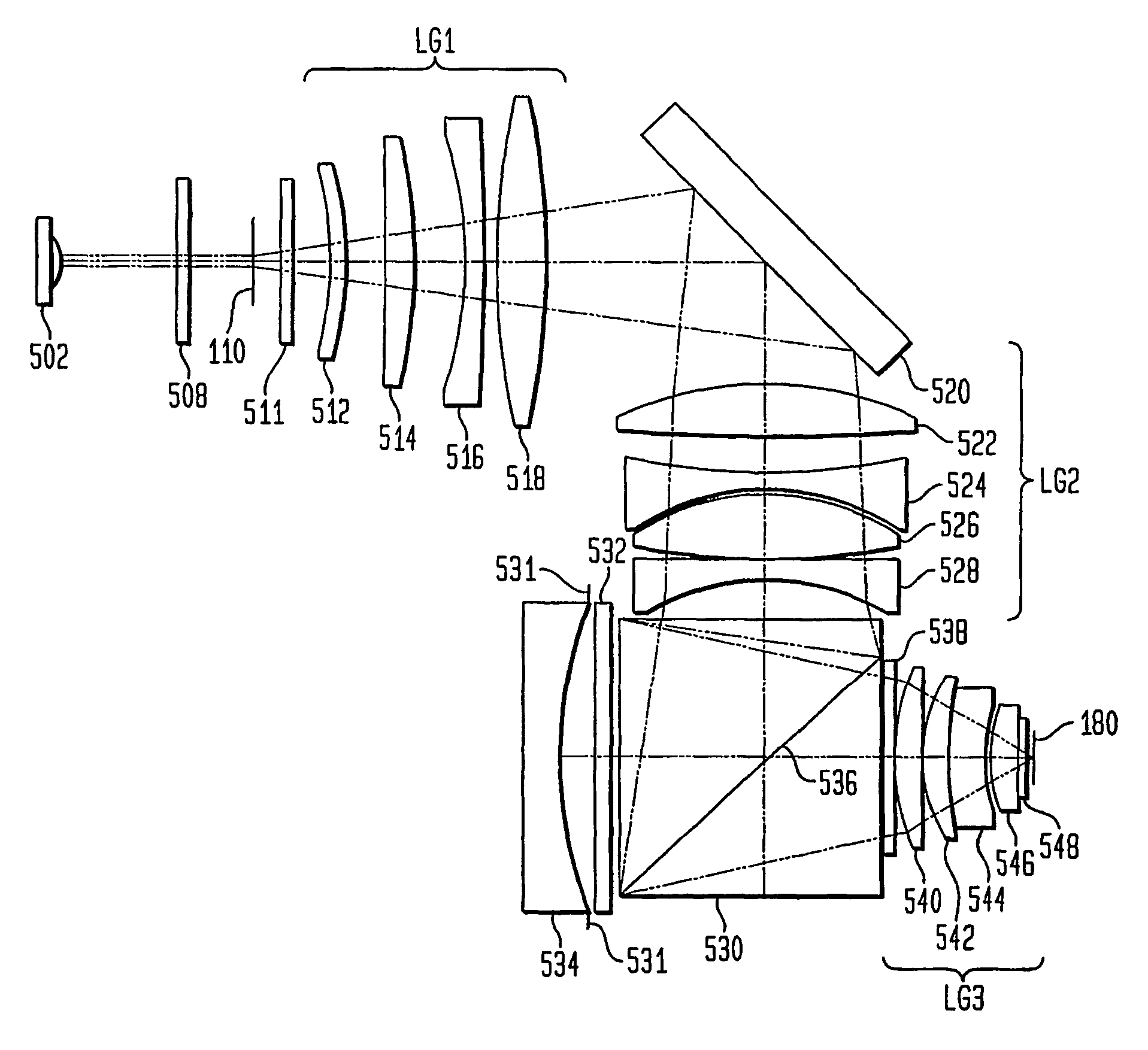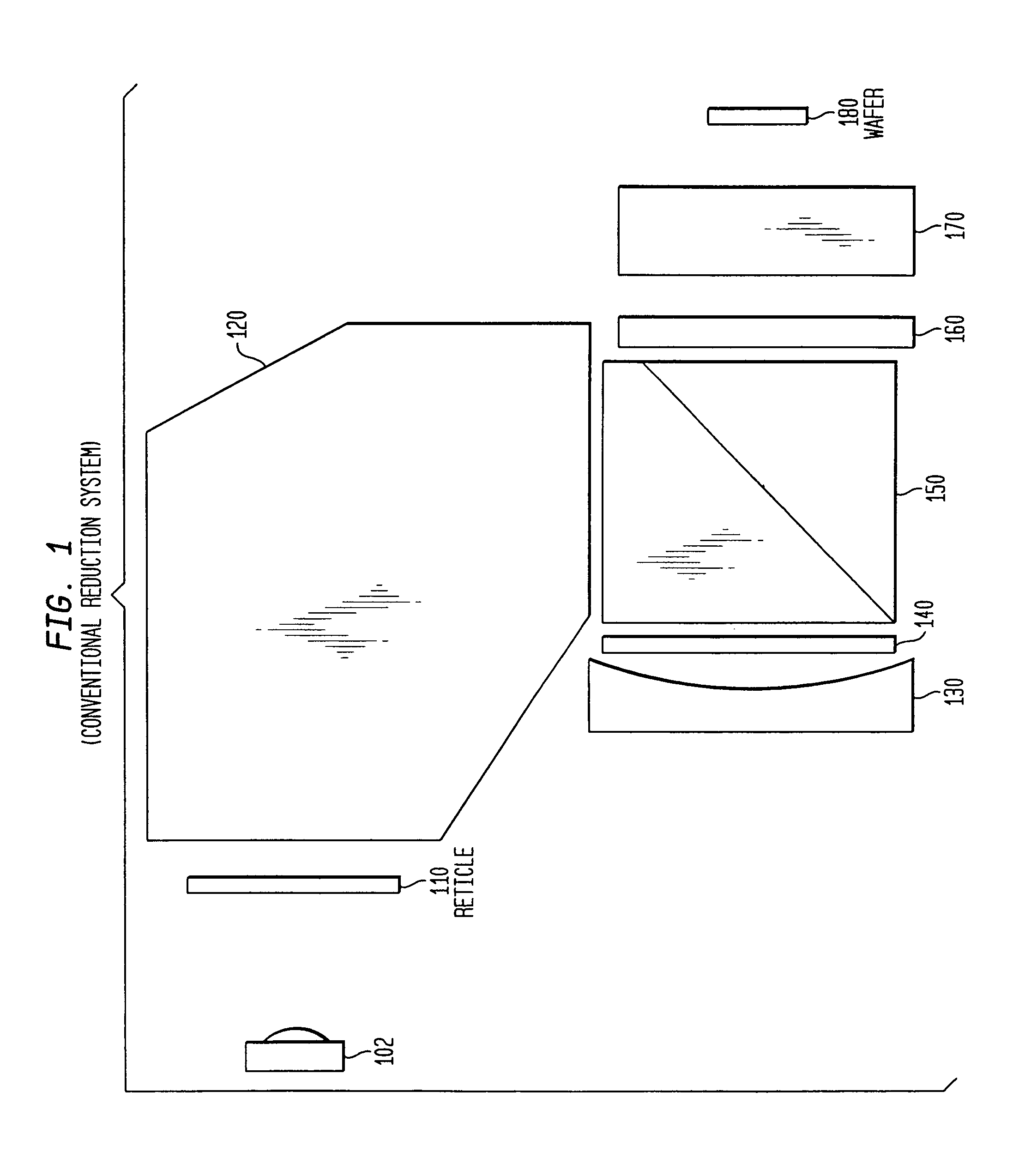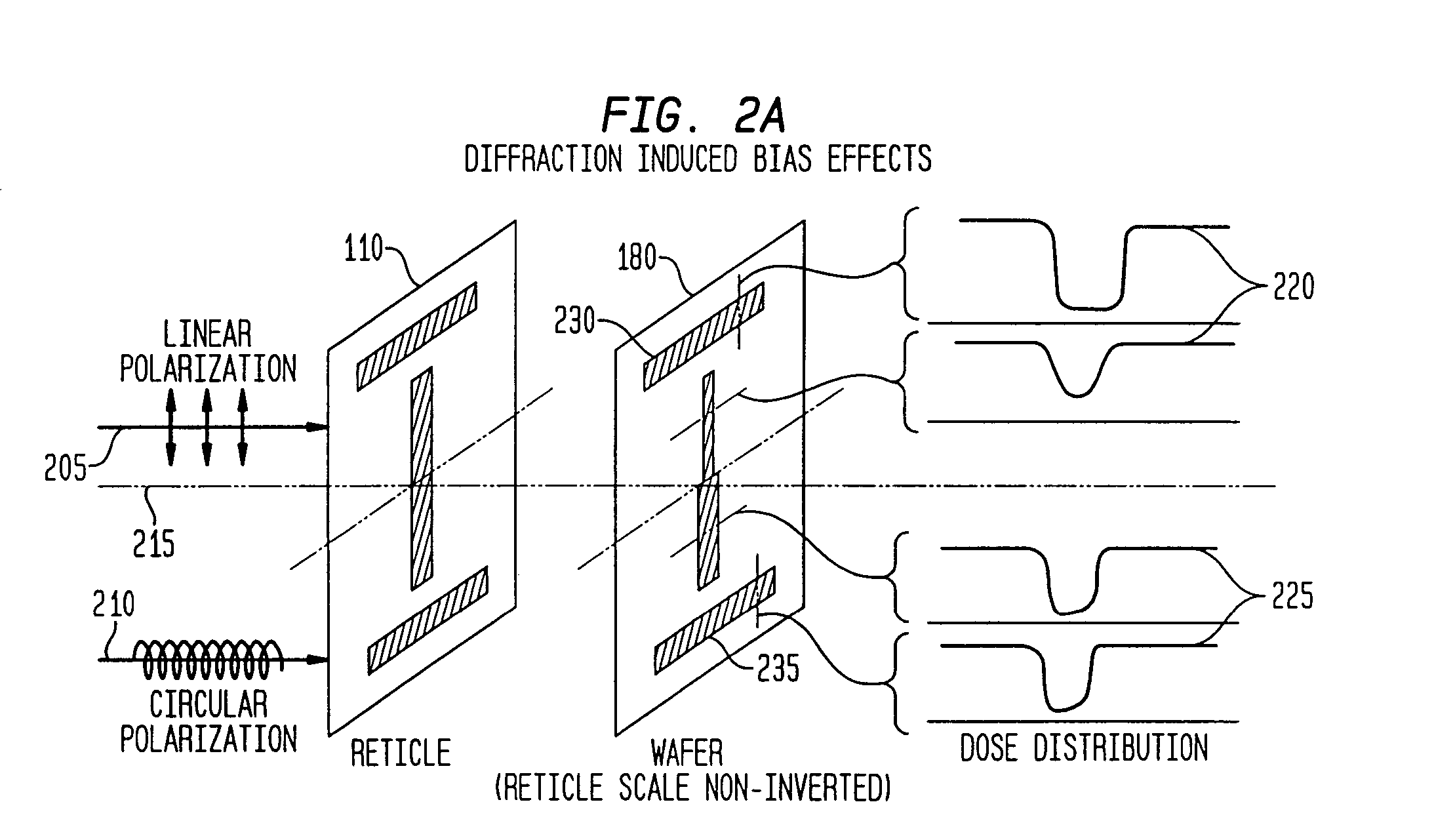Optical reduction method with elimination of reticle diffraction induced bias
a reticle diffraction and bias technology, applied in the field of optical systems, to achieve the effect of improving system performance, eliminating diffraction, and acceptable system performan
- Summary
- Abstract
- Description
- Claims
- Application Information
AI Technical Summary
Benefits of technology
Problems solved by technology
Method used
Image
Examples
example implementations
III. Example Implementations
[0031]A. Optical System With Elimination of Reticle Diffraction Induced Bias
[0032]B. Alternate Embodiment
[0033]C. Further Embodiments
IV. Alternate Implementation
I. Overview
[0034]A. Conventional Optical System
[0035]FIG. 1 illustrates a conventional optical reduction system. From its long conjugate end where the reticle is placed to its short conjugate end where the wafer is placed, it possesses a first optical component group 120, a beamsplitter cube 150, a first quarter-wave plate 140, a concave mirror 130, a second quarter-wave plate 160, and a second optical component group 170. A feature of any optical system is the interdependence of numerical aperture size and spectral radiation requirements. In order to efficiently illuminate the image or wafer plane 180, linearly polarized light is used. The limitations of linearly polarized light are introduced above and discussed in the following sections.
[0036]B. Reticle Diffraction Induced Bias
[0037]As recogniz...
PUM
| Property | Measurement | Unit |
|---|---|---|
| wavelengths | aaaaa | aaaaa |
| full-width-half-maximum bandwidth | aaaaa | aaaaa |
| full-width-half-maximum bandwidth | aaaaa | aaaaa |
Abstract
Description
Claims
Application Information
 Login to View More
Login to View More - R&D
- Intellectual Property
- Life Sciences
- Materials
- Tech Scout
- Unparalleled Data Quality
- Higher Quality Content
- 60% Fewer Hallucinations
Browse by: Latest US Patents, China's latest patents, Technical Efficacy Thesaurus, Application Domain, Technology Topic, Popular Technical Reports.
© 2025 PatSnap. All rights reserved.Legal|Privacy policy|Modern Slavery Act Transparency Statement|Sitemap|About US| Contact US: help@patsnap.com



